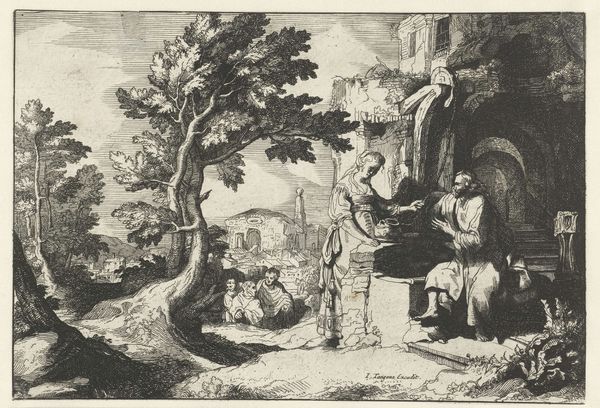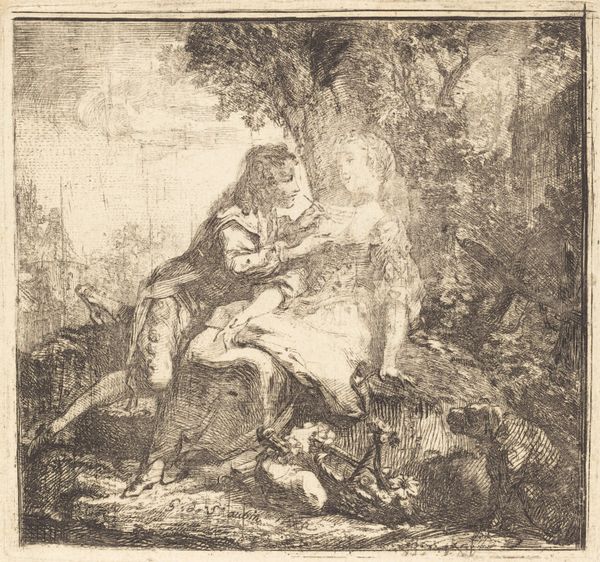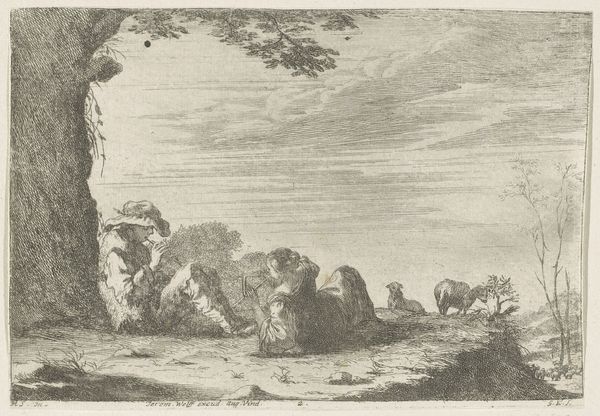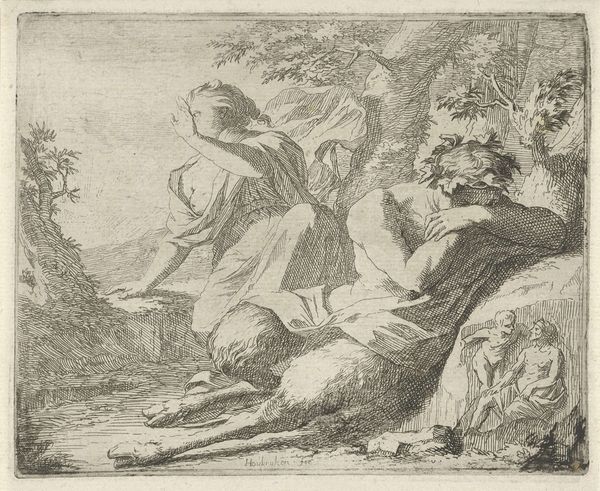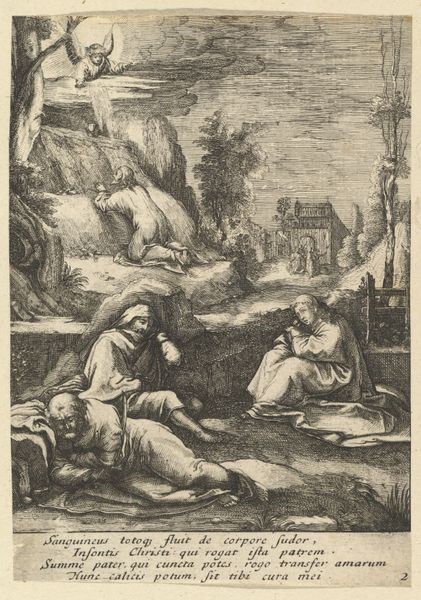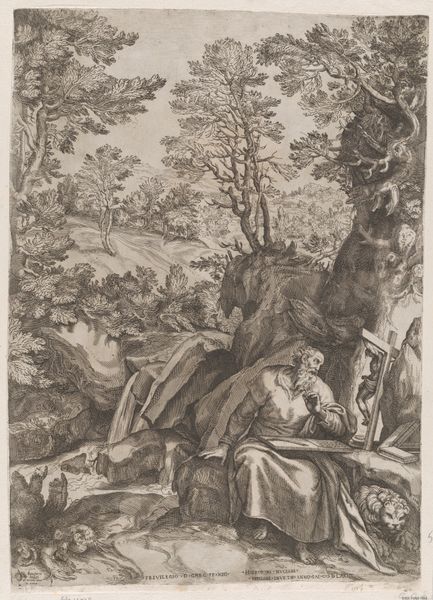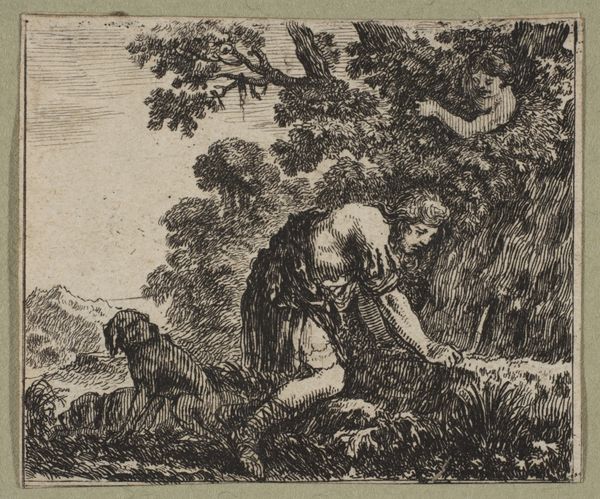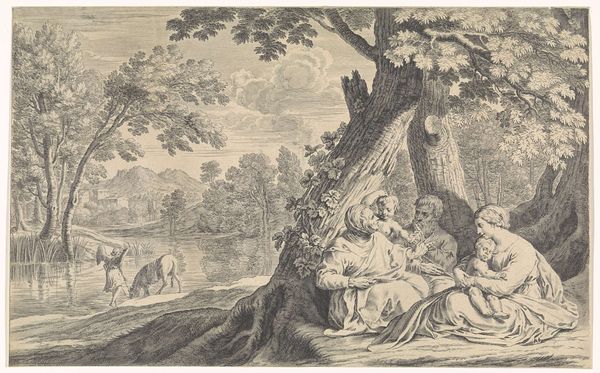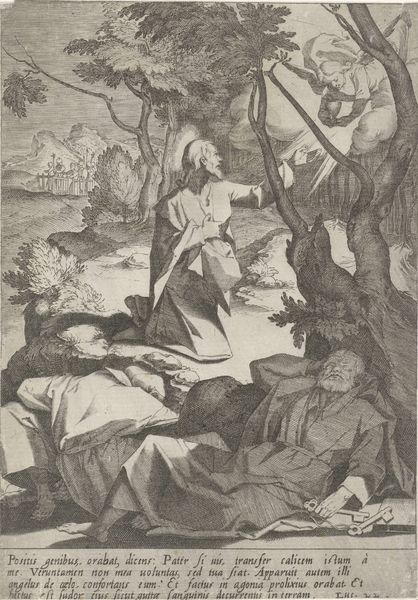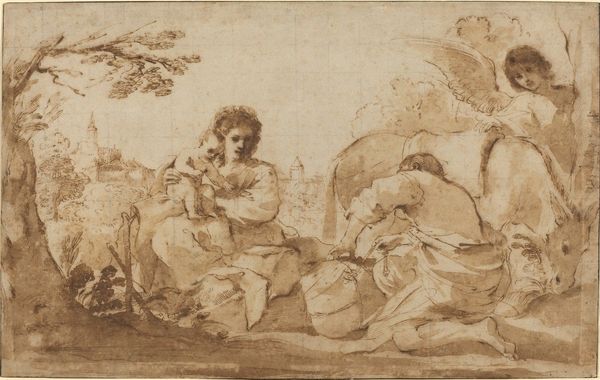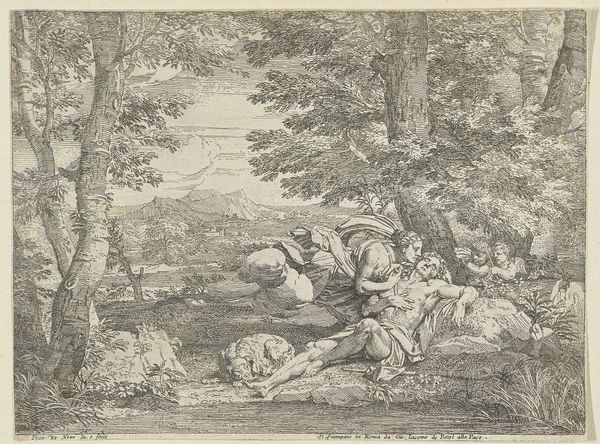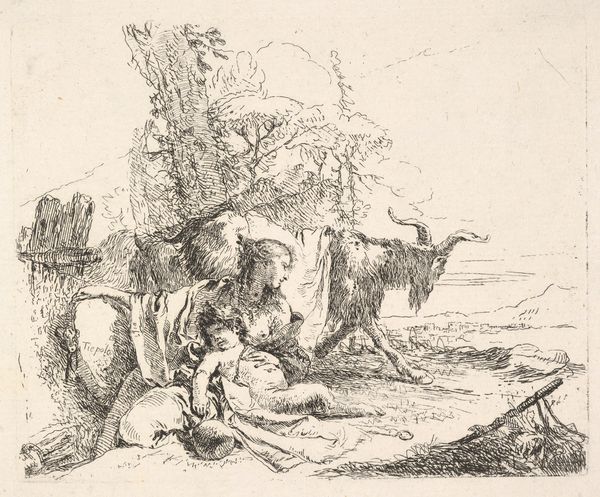
oil
#
impressionistic
#
woman
#
abstract painting
#
baroque
#
animal
#
oil
#
landscape
#
charcoal drawing
#
possibly oil pastel
#
oil painting
#
neo expressionist
#
acrylic on canvas
#
forest
#
underpainting
#
painting painterly
#
14_17th-century
#
watercolor
Dimensions: 20.5 x 26.0 x min. 0.6 cm
Copyright: Public Domain
Curator: Adriaen van de Velde’s “Shepherd and Shepherdess with their Flock at a Well," painted in 1668, welcomes us to contemplate rustic life through oil on canvas, currently residing at the Städel Museum. What are your initial thoughts? Editor: Dreamy. It’s a painting that hums with a kind of peaceful lassitude. Like the slow drift of a summer afternoon, heavy with the buzzing of bees and the scent of wildflowers. A bit idyllic, perhaps, in its soft focus. Curator: It's undeniably idealized. Observe how van de Velde arranges the figures and animals with such studied informality. The composition leads the eye gently from the shepherdess and her dogs on the left, to the flock gathered around the well, where the shepherd seems lost in thought. It creates a sort of visual harmony. Editor: The light feels deliberate too, almost theatrical. Everything’s bathed in this honeyed glow that smooths over the rough edges of reality. Is it just me, or does the inscribed stone feel a tad out of place? Like a classical ruin plopped down in the middle of the Dutch countryside. Curator: That element speaks to the pervasive influence of classical ideals during this period, doesn't it? Even in seemingly humble pastoral scenes, artists like van de Velde couldn't resist invoking a sense of timelessness, an echo of Arcadia. The inscription itself, though partly obscured, suggests a deeper symbolic meaning, a whisper of morality within the visual tableau. Editor: Makes you wonder about the shepherd's inner life, though! He's removed from his surroundings in a sense; in reverie while tending to his livestock, which almost acts like a parallel for his thoughts. Van de Velde really knows how to give the piece some heft with these understated dynamics, eh? It's that tension that hooks me! Curator: It also represents a trend during the Dutch Golden Age towards romanticized landscapes populated by contented figures. The attention to detail in depicting the animals – the sheep especially, each one individual – is remarkable. It transforms simple creatures into protagonists in this little drama. Editor: Ultimately, it’s an escape, isn’t it? A window onto a simpler time, where beauty resided in the everyday. Maybe that’s why it still resonates; we're always seeking some solace, some pastoral respite from our own complicated lives. Curator: I agree. It invites us to slow down, breathe in the scent of the hay, and perhaps even find a bit of ourselves reflected in the quietude of the scene. It certainly offers us today much to think about concerning themes of time, place, and memory.
Comments
No comments
Be the first to comment and join the conversation on the ultimate creative platform.
